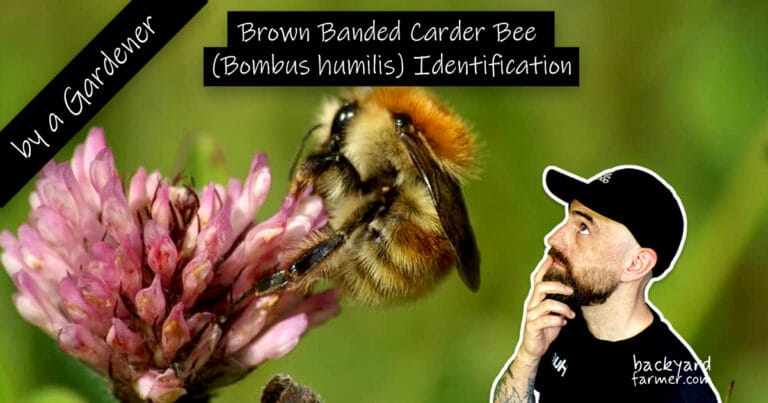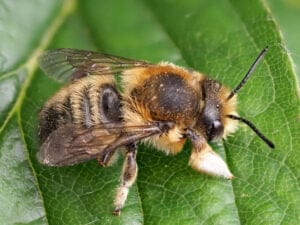Table of contents
Introduction
The Brown Banded Carder Bee (Bombus humilis) is a rare and declining bumblebee species found in the UK and parts of Europe. Queens typically emerge from hibernation between April and May, making them one of the first bumblebee species to appear each season. With its distinct brown-banded appearance and preference for flower-rich grasslands, this bee plays a crucial role in pollinating wildflowers, fruit trees, and crops.
However, habitat loss, climate change, and agricultural intensification have led to a sharp decline in its population. Recognizing this species and taking steps to support it are essential for its conservation.
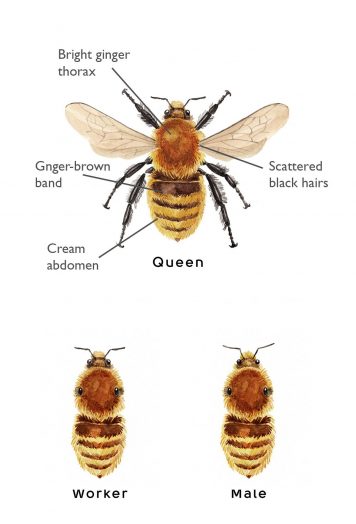
How to Identify the Brown Banded Carder Bee
Physical Characteristics
- Queen – Large (16-18 mm), covered in light brown fur with a faint brown band on the abdomen.
- Worker – Smaller (10-15 mm), similar in appearance but with less distinct banding.
- Male (Drone) – Slightly smaller than the queen, with longer antennae and distinct facial hair.
Identification & Key Facts
| Attribute | Details |
|---|---|
| Common Name | Brown Banded Carder Bee |
| Latin Name | Bombus humilis |
| Size | 16-18 mm (queen), 10-15 mm (worker) |
| Location | UK, Western & Central Europe |
| Active Months | May – September |
| Habitat | Flower-rich grasslands, heathlands, coastal dunes |
| Nesting Behavior | Nests in long grass or abandoned rodent burrows |
| Social Behavior | Social species, forming small colonies |
| Flora & Fauna | Vetches, red clover, bird’s-foot trefoil, knapweed |
| UK Status | Declining, near-threatened |
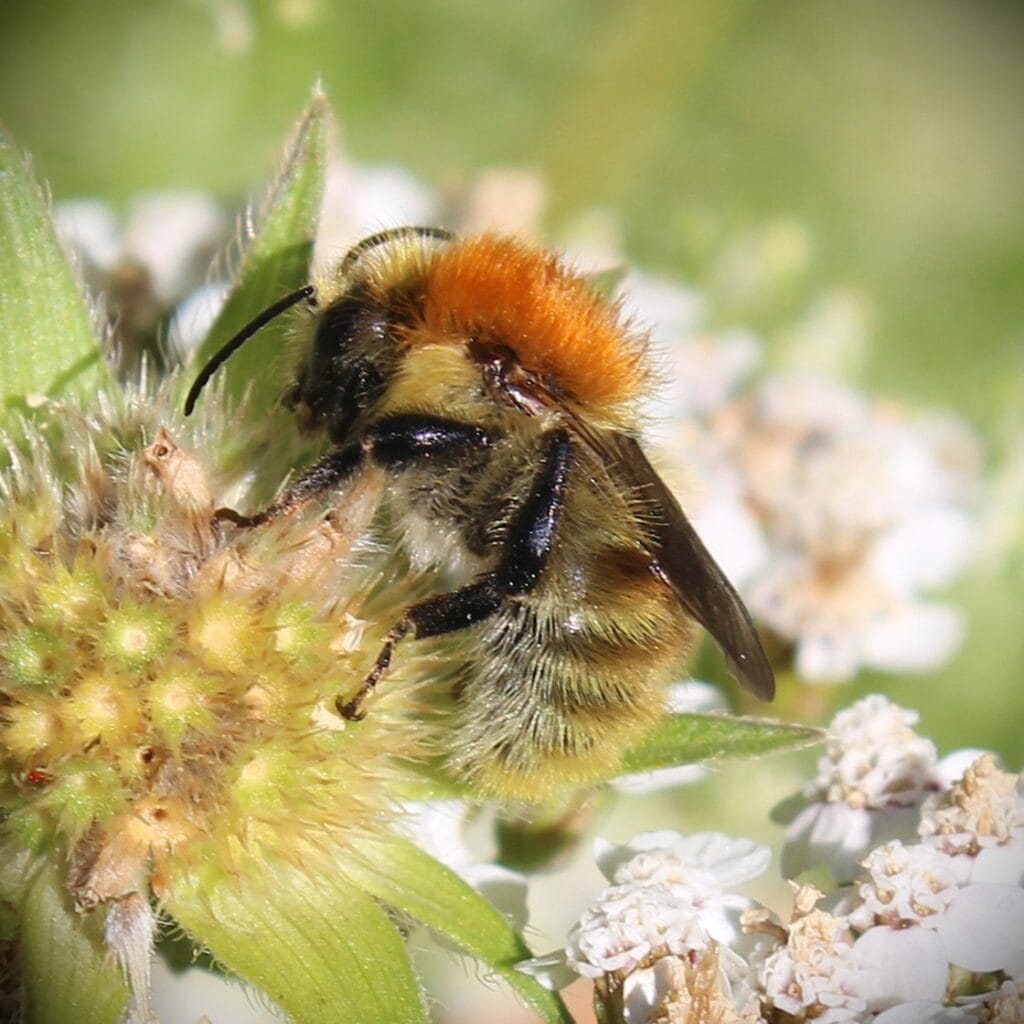

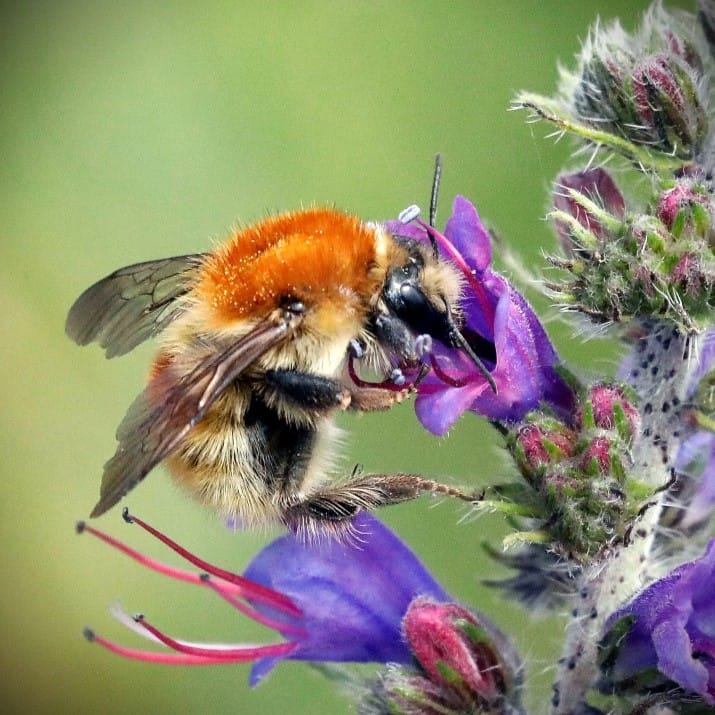
Similar Species
The Brown Banded Carder Bee is often mistaken for:
- Common Carder Bee (Bombus pascuorum) – Lacks a clear brown band on the abdomen.
- Moss Carder Bee (Bombus muscorum) – More golden-yellow in appearance with no brown bands.
- Shrill Carder Bee (Bombus sylvarum) – Smaller, with greyish-yellow fur and a high-pitched buzz.
👉 Learn more in our Bee Identification Guide.
Why the Brown Banded Carder Bee Matters
This bee is a vital pollinator, ensuring the survival of both wild and cultivated plants. It favors leguminous plants like red clover and vetches, which are essential for grassland biodiversity.
Unfortunately, its population is rapidly decreasing due to:
- Loss of wildflower meadows
- Intensive farming and urban development
- Climate change disrupting flowering seasons
- Competition from invasive species
Protecting this bee supports ecosystem health and food security.
How You Can Help
Plant Bee-Friendly Flowers
- Grow nectar-rich plants like red clover, knapweed, bird’s-foot trefoil, vetches, and thistles.
- Ensure a variety of plants bloom from early spring to late autumn.
Avoid Harmful Pesticides
- Chemicals like neonicotinoids harm bees and should be avoided.
- Use organic pest control methods whenever possible.
Provide Nesting Spaces
- Leave patches of tall grass undisturbed for nesting.
- Reduce mowing frequency to encourage natural habitats.
Support Conservation Efforts
- Get involved with local wildlife organizations.
- Participate in citizen science projects that track bee populations.
👉 Learn more about creating a bee-friendly garden.
Conclusion
The Brown Banded Carder Bee (Bombus humilis) is an essential pollinator facing serious threats. By growing wildflowers, avoiding pesticides, and preserving natural habitats, you can make a meaningful impact.
Every garden, field, and wildflower patch contributes to their survival. Let’s work together to protect pollinators and keep our ecosystems thriving!

